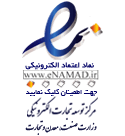Showing 2 results for Abdolalian
Sepideh Shakeri, Narjes Soltani, Mohammad Reza Javan, Mehrnaz Abdolalian, Hossein Ayatollahi, Seyyede Fatemeh Shams,
Volume 17, Issue 1 (Jan-Feb 2023)
Abstract
Background and objectives: Fanconi anemia (FA) is an autosomal recessive disorder that usually manifest in forms of pancytopenia, hyperpigmentation, and skeletal complications. Mutation in the DNA repair regulatory genes is associated with the development of FA. Examination of chromosomal breakages when chromosomes are exposed to cross-linking agents is a common method of FA diagnosis. This study aimed to evaluate the prevalence and characteristics of patients with FA in Mashhad, northeast of Iran.
Methods: In this study, we evaluated 312 suspected FA patients who had been referred to the laboratory of Ghaem Hospital during 2014-2020. The mitomycin C method was used to identify FA-positive subjects.
Results: After the examinations, 84 patients (26.9%) were cytogenetically positive for FA. Of 84 patients, 48 (57.1%) were male and 36 (42.9%) were female. Thumb abnormality was the most common congenital anomaly (43.2%).
Conclusion: Based on the findings, males are more susceptible to FA, and thumb abnormality is the most common congenital anomaly associated with FA. Combination of clinical manifestations and genetic susceptibility in patients may contribute to a more accurate diagnosis.
Faeze Shahriyari, Fatemeh Shams, Mehrnaz Abdolalian, Narjes Soltani, Hashem Honari, Leila Rafaty Javanbakht, Mohammadreza Javan,
Volume 19, Issue 5 (9-2025)
Abstract
Background: Blood transfusion services are responsible for providing blood products.
Knowing parameters, which affects people’s decision to donate blood, will help to respond to this demand. This study was designed to assess the attitudes and barriers toward blood donation among volunteer donors in Mashhad (Northeast of Iran) during 2014-1022015.
Methods: This cross-sectional study was performed in Iranian blood transfusion organization (IBTO) centers in Mashhad city. A total of 640 volunteer blood donors including first-time and frequent donors attended this study. The questionnaire was designed based on similar studies and itsthe reliability and validity were controlled. A Questionnaire consisting of multi-choice questions was provided to participants. SPSS software was used for data analysis. The t-student test was used and P<0.05 was considered significant.
Results: Among 640 participants, 80% of them completed the questionnaire and returned it. 474(92.5%) of participants were male and 38(7.4%) were female. 114 of donors were first-time donors and the others had donated blood before. The most important motivations for blood donation include altruism 249 (91.88%) and 76 (85.40%) in frequent and first-time donors respectively. Other factors like social. Lack of time (73.80%) was the most important barrier to blood donation among first-time donors.
Conclusion: The results showed that the most important motivemotive and barrier for blood donation was altruism among donors was altruism and lack of time. In other words Paying paying attention to the motivations or barriers of blood donation in donors can play an important role in attracting and retaining donors.




